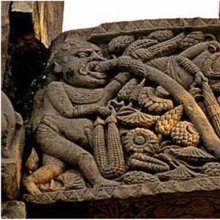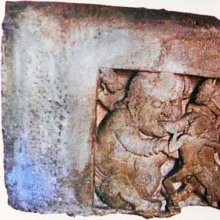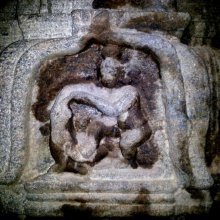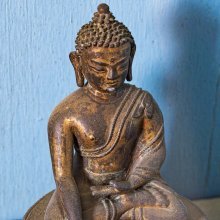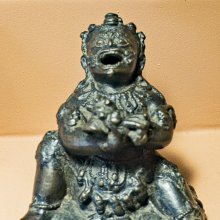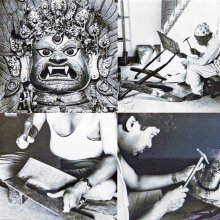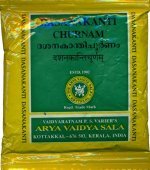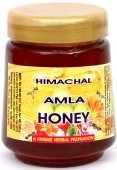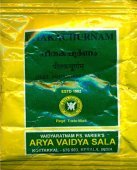Mouth: 2 definitions
Introduction:
Mouth means something in Hinduism, Sanskrit. If you want to know the exact meaning, history, etymology or English translation of this term then check out the descriptions on this page. Add your comment or reference to a book if you want to contribute to this summary article.
Images (photo gallery)
(+33 more images available)
In Hinduism
Gitashastra (science of music)
Source: Shodhganga: Elements of Art and Architecture in the Trtiyakhanda of the Visnudharmottarapurana (gita)The Mouth (in Sanskrit: Āsya) refers to one of various Organs of Utterance (sthāna), according to the Saṃgītaratnākara.—During the practise of Vocal Music, the proper production of the concerned sound is always considered as very important. Sthāna or ucchāraṇasthāna is the place of articulation of sound. Bhattojidīkṣita in his Siddhāntakaumudī said about ten kinds of sthāna (i.e., the organs of utterance), e.g., āsya (mouth).
Gitashastra (गीतशास्त्र, gītaśāstra) refers to the ancient Indian science of Music (gita or samgita), which is traditionally divided in Vocal music, Instrumental music and Dance (under the jurisdiction of music). The different elements and technical terms are explained in a wide range of (often Sanskrit) literature.
Shaktism (Shakta philosophy)
Source: Google Books: ManthanabhairavatantramThe Mouth is sometimes associated with Virajeśa—one of the Sixteen Siddhas according to the Manthānabhairavatantra, a vast sprawling work that belongs to a corpus of Tantric texts concerned with the worship of the goddess Kubjikā.—These sixteen spiritual teachers represent the disciples of the Nine Nāthas who propagated the Western Transmission noted in the Kubjikā Tantras.—Various texts record the locations of the sixteen Siddhas within the body (called ‘doors’). For example, the Kulakaulinīmata mentions the Mouth, whereas the Ṭīkā mentions the Breast and the Kumārikākhaṇḍa mentions kuṇḍalinī as the location of Virajeśa.

Shakta (शाक्त, śākta) or Shaktism (śāktism) represents a tradition of Hinduism where the Goddess (Devi) is revered and worshipped. Shakta literature includes a range of scriptures, including various Agamas and Tantras, although its roots may be traced back to the Vedas.
See also (Relevant definitions)
Starts with: Mouth-root, Mouthlo.
Query error!
Full-text (+3456): Anana, Mukha, Vaktra, Asya, Lapana, Vadana, Acamana, Mukhavadya, Mukhatas, Tunda, Gandusa, Acamaniya, Kumbhaka, Mukhaja, Mukhagni, Acama, Mukhashuddhi, Upasparsha, Praseka, Raktapitta.
Relevant text
Search found 498 books and stories containing Mouth, The mouth; (plurals include: Mouths, The mouths). You can also click to the full overview containing English textual excerpts. Below are direct links for the most relevant articles:
Bhajana-Rahasya (by Srila Bhaktivinoda Thakura Mahasaya)
Text 17 < [Chapter 4 - Caturtha-yāma-sādhana (Madhyāhna-kālīya-bhajana–ruci-bhajana)]
Text 5 < [Chapter 3 - Tṛtīya-yāma-sādhana (Pūrvāhna-kālīya-bhajana–niṣṭhā-bhajana)]
Text 12 < [Chapter 3 - Tṛtīya-yāma-sādhana (Pūrvāhna-kālīya-bhajana–niṣṭhā-bhajana)]
Roman Egypt to peninsular India (patterns of trade) (by Sunil Gupta)
Ancient Settlements of Lower Bengal and Mouths of the Ganga < [Chapter 4 - Archaeological review of Indo-Roman trade]
4.1.2. Reconstruction of Sailing Conditions as Described in the Periplus < [Chapter 4 - Archaeological review of Indo-Roman trade]
Reconstruction of Mouths of Ganga (as identified by Ptolemy) < [Chapter 4 - Archaeological review of Indo-Roman trade]
Brihad Bhagavatamrita (commentary) (by Śrī Śrīmad Bhaktivedānta Nārāyana Gosvāmī Mahārāja)
Verse 2.4.205 < [Chapter 4 - Vaikuṇṭha (the spiritual world)]
Verse 1.7.87-88 < [Chapter 7 - Pūrṇa (pinnacle of excellent devotees)]
Verse 1.1.60 < [Chapter 1 - Bhauma (the earthly plane)]
Rasa Jala Nidhi, vol 3: Metals, Gems and other substances (by Bhudeb Mookerjee)
Part 2 - Extraction of oil from seeds of Ankola or Ankolla < [Chapter XXXII - Extraction of oil from seeds]
Part 4 - Iron variety (c): Kanta iron < [Chapter IV - Metals (4): Lauha (iron)]
Part 20 - Symptoms of Poison < [Chapter XXX - Visha (poisons)]
Chaitanya Bhagavata (by Bhumipati Dāsa)
Verse 2.13.325 < [Chapter 13 - The Deliverance of Jagāi and Mādhāi]
Introduction to chapter 14 < [Chapter 14 - Yamarāja’s Saṅkīrtana]
Verse 1.2.9-11 < [Chapter 2 - The Lord’s Appearance]
Jnaneshwari (Bhavartha Dipika) (by Ramchandra Keshav Bhagwat)
Verse 11.27 < [Chapter 11 - Vishvarupa-darshana-yoga]
Verse 11.30 < [Chapter 11 - Vishvarupa-darshana-yoga]
Verse 11.24 < [Chapter 11 - Vishvarupa-darshana-yoga]
Related products
(+19 more products available)
